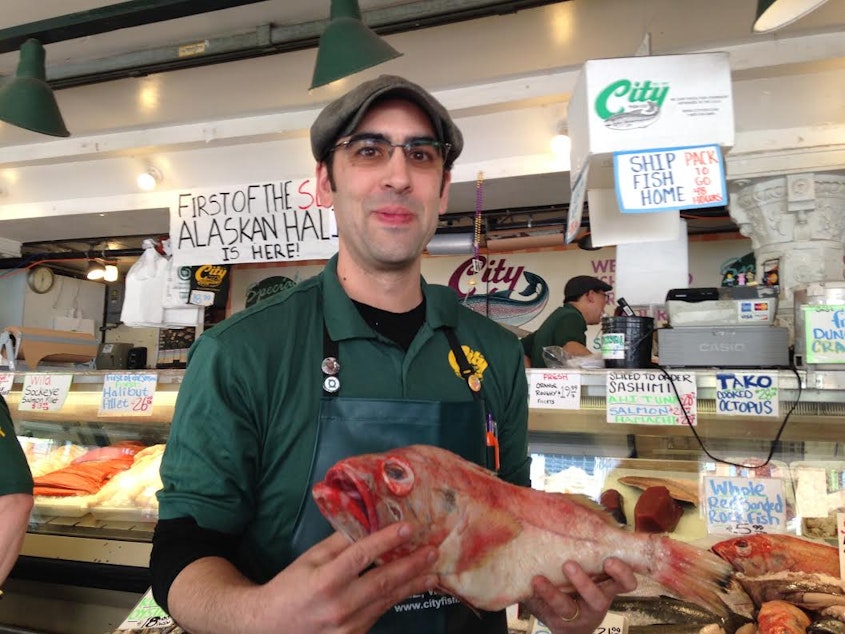What Cruise Tourists Buy At The Pike Place Market

The cruise ship docked at 7 a.m.
By 8 a.m., Danielle Smith and her family were at Pike Place Market, walking through the stalls. They had 48 hours to enjoy the city before flying home to Atlanta.
On the schedule: the landmark Starbucks across the street with a line out the door, and later, the Space Needle. “I’ve been here an hour,” Smith said. “It’s beautiful!”
Cruise ship season has started in Seattle. Nearly 900,000 passengers are expected to pass through the city this summer to board Alaska-bound cruises. Each cruise injects $2.4 million into the region’s economy, according to the Port of Seattle. But which merchants see the money depends.
Ready-to-eat food is the easiest sell. Harvey Forman recently started selling Czech pastries called “kolaches” at his stall in the market. He has traditional, filled with fruit and cream cheese, as well as “Texas-style,” with hot sausage inside. They’re easy to hold while strolling.
Sponsored
On a recent morning, 70 percent of people who bought his kolaches were tourists. He knows because he asked.
But many food sellers in the market can’t count on cruise ship passengers for big profits.
Like Gabriele Kessler at the German deli Bavarian Meats.
“This may be a bad term, but we call them ‘the grazers,’” Kessler said. “They kind of just graze through, they look at everything, and they pick up mostly candy because you cannot take perishable food on the boat.”
Still, she said tourist traffic is vital for Seattle – people on vacation tend to spend freely, and she appreciates the warmth and friendly manners of Southern visitors especially.
Sponsored
Some vendors have gotten creative to attract tourists. A sign at Andrew Wichmann’s fish stall offers to “Ship Fish Home.” He estimates that half his sales in summer are packed in ice for passengers going to the airport.
Mykaela Wills said her family has been selling Sweet Success honey at Pike Place Market for decades. They sell 3-ounce jars of honey that Wills touts as “carry-on friendly” to accommodate tourists.
“When the ships started coming in, it basically changed the way that we sell things,” she said. “We had to start going into honey sticks, things like that.”
Pike Place Market’s marketing director, Kelly Lindsay, said the market’s nonprofit mission – going back to the 1970s – is not to serve as a tourist destination. The market is charged with supporting local farmers and small, independent businesses. The tricky part has been harnessing tourism dollars to achieve those goals.
Lindsay said the market requires vendors of readymade foods – like Forman’s pastries – to use at least half locally sourced ingredients. Forman said proudly that ingredients for his kolaches are in fact over 90 percent local, from the flour to the berries.
Sponsored
And even if tourists don’t buy much produce, Lindsay said Seattle’s downtown growth means the market vendors are less dependent on seasonal tourism.
She said sales in the market are up 6 percent over last year, even in the winter months.
“We didn’t see the slowdown this winter as much as we sometimes do,” she said. “That tells me there isn’t really one reason for why the market is busier, but in general our region is booming.”

